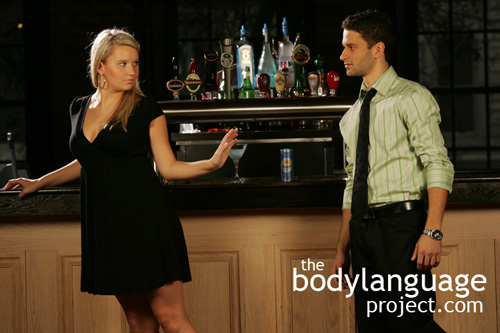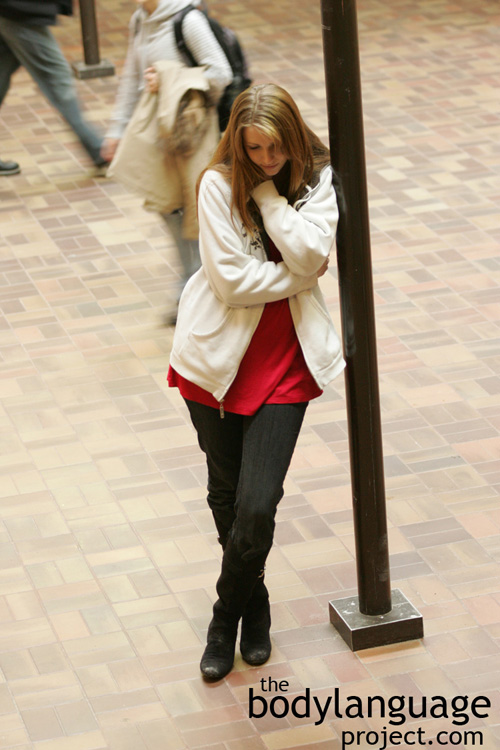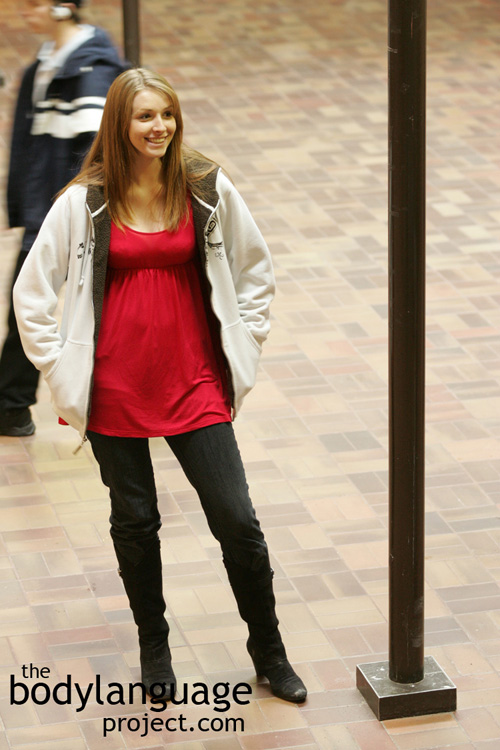
The stiff arm is an obvious signal that approach is unwelcome as it forms a solid barrier around our personal space zone.
A more obvious defensive posture is the stiff arm which happens by thrusting the arm forward and away from the body with the palm face vertical in a “stop” type signal. Another defensive posture is the curved arm, a variation of the stiff arm, where the arm is bent and locked at the elbow and thrust outward facing down or horizontally. As a cluster, the stiff arm and curved arm is accompanied by a step backwards to reclaim stolen space, which is the true intention of the stiff arm. Both postures are called “arm-distancing” tactics because the arms are used to control space. When we say “Keeping people at arms length” this is the body language we refer to. The curved arm also creates a closed body position since the arm crosses over the middle of the body. At times, the arm fails to come up any higher than a few inches, or the hand might flip upwards slightly while being held at waist level, however, the message is the same. As the intensity of the approach increases, the hand and arm will rise even further and a person will shift their weight backwards.
Football running backs use the stiff and curved arm to provide a space buffer in order to fend off tackles by keeping the arms of defenders away from their bodies. The space created next to the body, to the inside of the elbow in the curved arm, is reserved so that no one can enter. The curved and stiff arm both serve to deflect a possible attack away from the body or when navigating crowded areas such as airports, amusement parks or nightclubs. Women can also be found doing this too, especially when men get too close for comfort. The signal is a strong indicator that personal space is being violated and the carrier of the message does not want someone to come even an inch closer. Men in dating situations should be particularly aware of this body language and treat it appropriately, back up, and give some space.
Other times, the stiff or curved arm is used to thwart closeness that is not necessarily due to physical threat. Sometimes we keep our arms out just to keep people we don’t like from getting too close. The arms can also indicate how much someone likes or dislikes someone by their proximity to other people. When someone is particularly turned off by someone else they will keep their arms away from them in-so-much as their bodies can maintain enough personal space and don’t need to be thrown in harms way, so to speak, to serve as stiff arms.


